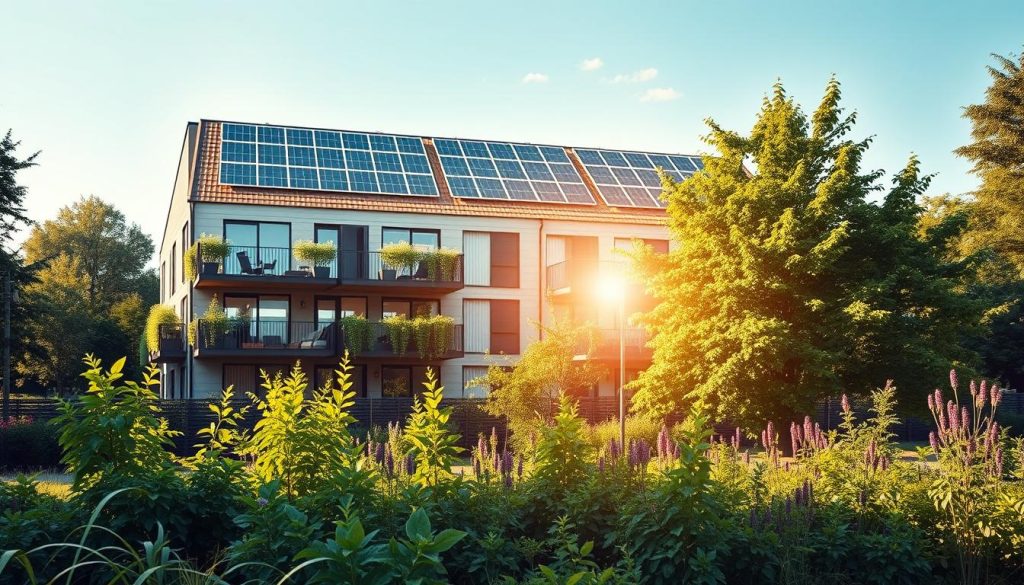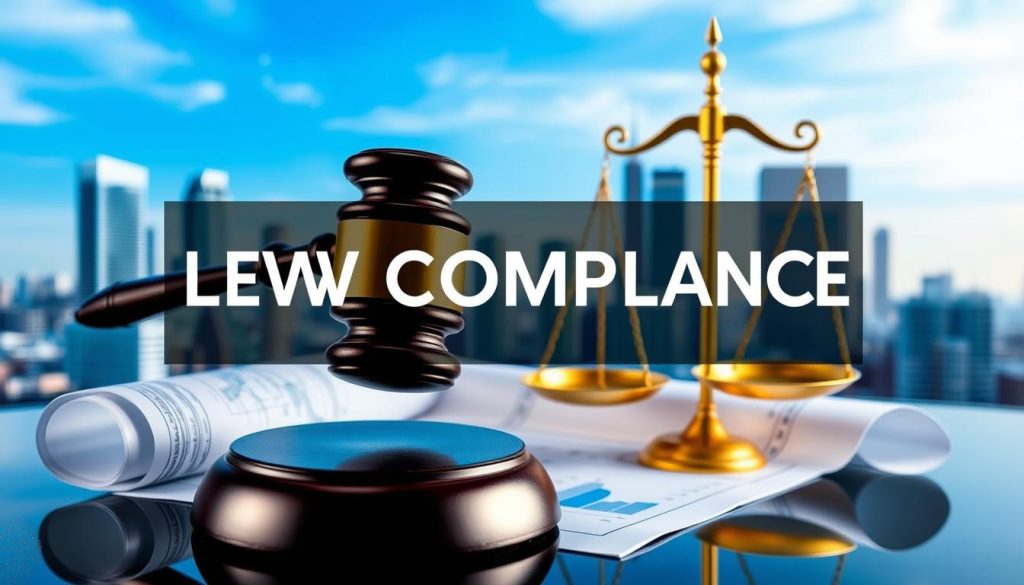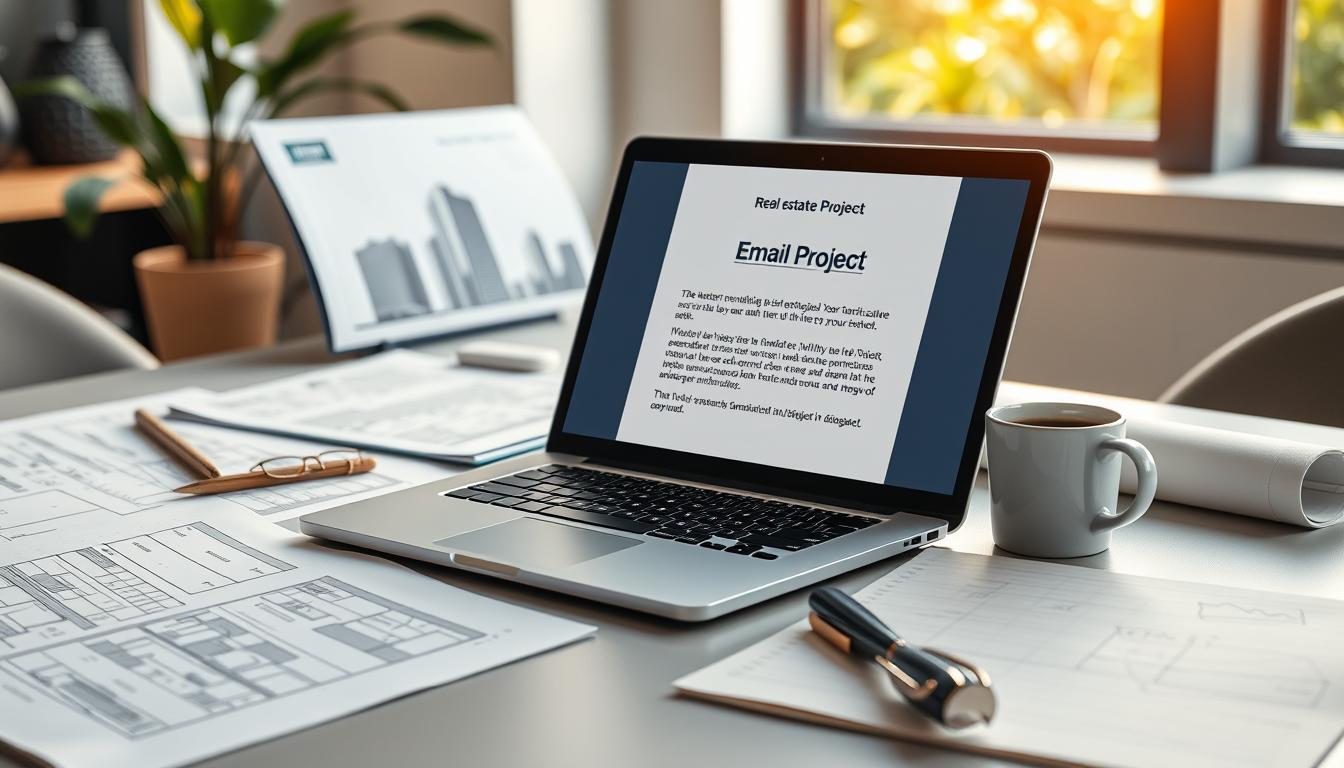In the fast-paced world of real estate, getting funding for projects can be a big win. This guide shows you how to write real estate project investment emails that work. We’ll look at sustainable financing and green investments, two big trends in the market.
We’ll cover everything from catchy subject lines to making your pitch personal. You’ll learn how to stand out in a crowded inbox and find investors for your innovative real estate projects.
Get ready to change your cold email game and increase your funding chances. This guide is for everyone, whether you’re experienced or new. It will give you the tools to make your real estate dreams come true.
Key Takeaways
- Understand current market trends in real estate project funding
- Learn to craft compelling subject lines that grab investors’ attention
- Discover techniques for personalizing your investment pitch
- Explore strategies for highlighting sustainable and green investment opportunities
- Master the art of follow-up to convert prospects into investors
- Gain insights on legal compliance in investment outreach
- Learn to measure and optimize your email campaign performance
Understanding the Real Estate Project Investment Email Landscape
The real estate world is changing fast, with a big push towards green projects. This change opens up new chances for investors and developers, especially in renewable energy.
Current Market Dynamics in Real Estate Funding
Clean tech funding is on the rise in real estate. More investors want projects that use energy-saving tech and green building. This is because of environmental worries and the chance for saving money over time.
Key Players and Decision Makers
Who decides on real estate investments is changing. Old investors are now joined by impact investors, green funds, and tech-smart entrepreneurs. These newcomers are making the industry more innovative and green.
Investment Trends and Opportunities
Eco-friendly real estate investments are becoming common. Projects with solar panels, green roofs, and smart energy systems are getting a lot of interest. This move towards green is creating new funding and development chances.
| Investment Trend | Growth Rate | Potential ROI |
|---|---|---|
| Renewable Energy Projects | 15% | 12-18% |
| Smart Building Technology | 10% | 8-15% |
| Green Retrofitting | 8% | 6-12% |
As the real estate world keeps changing, knowing these trends is key. Making your cold emails focus on green features and clean tech can really help you get funding for your projects.
Building Your Investor Database for Cold Outreach
Creating a strong investor database is crucial for cold outreach in real estate. It involves finding and checking if potential investors are interested in green and socially responsible investments.
To start, look for investors who have shown interest in sustainable real estate. Search for those who support green initiatives or socially responsible investments. Use industry events, professional networks, and social media to find these investors.
Segmenting your database is key. Group investors by factors like how much they invest, what types of projects they like, and where they are located. This makes your outreach more focused and effective.
“A well-organized investor database is the foundation of successful cold outreach in real estate funding.”
Think about using special software to manage your investor data. These tools can help you keep track of interactions, remind you to follow up, and give insights into what investors like.
| Data Source | Information Gathered | Relevance to Environmental Impact Investing |
|---|---|---|
| Industry Reports | Market trends, investment volumes | Identify sectors with growing interest in sustainable projects |
| Professional backgrounds, connections | Find investors with experience in socially responsible investments | |
| Investment Forums | Active discussions, investor interests | Gauge interest in specific types of green real estate projects |
Always update and improve your database. The real estate investment world changes fast, especially in green and socially responsible areas. Keeping your data up to date helps your outreach efforts be more effective and focused.
Crafting the Perfect Subject Line for Investment Emails
Your subject line is the first thing people see in your email. It’s crucial for grabbing attention and getting your message across. Let’s explore how to write subject lines that grab investors’ interest and boost your open rates.
Psychology Behind High-Converting Subject Lines
Great subject lines use psychology to their advantage. They spark curiosity, create a sense of urgency, or highlight the benefits. For real estate projects, especially those focused on renewable energy, consider these key elements:
- Scarcity: “Limited spots: Green real estate investment opportunity”
- Personalization: “[Investor Name], your next sustainable property venture awaits”
- Benefit-driven: “Cut costs and boost ROI with our eco-friendly real estate project”
A/B Testing Strategies for Subject Lines
To really make your email stand out, try A/B testing. Split your list and test different subject lines:
| Version A | Version B |
|---|---|
| “Exclusive: Solar-powered apartment complex seeks investors” | “10% higher returns: Invest in our green real estate project” |
| “[City] real estate boom: Get in on sustainable housing” | “Reduce carbon footprint while increasing profits” |
Avoiding Spam Filters and Trigger Words
Choose your words carefully to avoid spam filters. Steer clear of words like “free,” “guarantee,” or “no risk.” Use clear, honest language that showcases what makes your renewable energy financing unique.
“The best subject lines are like a firm handshake – confident, professional, and leaving a lasting impression.”
By perfecting your subject line game, you’ll boost your chances of getting your email opened and read. This opens doors to successful partnerships in renewable energy financing.
Essential Elements of a Compelling Project Pitch
A successful real estate project pitch needs to grab investor interest. It should highlight sustainable financing and climate change mitigation. These are key to standing out in today’s market.
Begin by showcasing your project’s unique selling points. Emphasize eco-friendly features that tackle climate change. This appeals to green investors and ensures your project’s long-term success.
Financial projections are vital in any real estate pitch. Show clear, concise data on expected returns. Explain how sustainable financing benefits investors and the environment.
“Sustainable real estate projects aren’t just good for the planet; they’re good for the bottom line.”
Make your email content grab attention fast. Use bullet points to highlight key benefits:
- Energy-efficient design reducing operational costs
- Green building certifications enhancing property value
- Innovative technologies for climate change mitigation
- Access to sustainable financing options and green bonds
Include a table comparing your project’s sustainable features to traditional developments:
| Feature | Your Project | Traditional Development |
|---|---|---|
| Energy Efficiency | LEED Platinum certified | Standard building codes |
| Water Conservation | Greywater recycling system | No recycling measures |
| Carbon Footprint | Net-zero emissions goal | No specific targets |
| Financing Options | Green bonds available | Conventional loans only |
By focusing on these elements, your project pitch will shine. It will show the potential for both profit and environmental good.
Personalizing Your Real Estate Project Investment Email
Making your emails personal is crucial to grab investors’ attention. Tailoring your message shows you value their time. This boosts your chances of getting a positive reply. Let’s look at how to make your outreach more effective.
Research Techniques for Investor Profiling
Begin by digging into potential investors’ backgrounds. Use LinkedIn, company sites, and industry news for insights. Search for shared connections, past investments, and current interests. This info helps you craft messages that speak to each investor’s unique view.
Customization Strategies That Work
After gathering intel, use it effectively. Mention specific projects the investor has supported or their recent successes. If they’re into green investments, highlight your project’s eco-friendly aspects. For those keen on reducing carbon footprint, show off your sustainable building methods.
Building Authentic Connections Through Content
Create content that speaks to investors’ interests. If they’re into innovation, talk about the advanced tech in your project. For those who care about urban renewal, explain how your development will uplift the community. Aligning your message with their values builds stronger connections and boosts funding chances.
“The most effective cold emails feel like they were written just for me. They show the sender has done their homework and understands my investment goals.”
Personalization is more than just using someone’s name. It’s about showing you get their needs and can provide real value. With careful research and tailored content, your emails will shine in a crowded inbox.
Sustainable and Green Investment Angles in Cold Emails
Green investing is becoming more popular. Real estate developers can attract investors by showcasing eco-friendly aspects of their projects. This appeals to those interested in renewable energy and eco-friendly portfolios.

To grab attention, highlight energy-efficient features in your designs. Show off solar panels, smart thermostats, and green materials. These not only help the environment but also cut down on costs, appealing to smart investors.
Also, talk about how your projects meet Environmental, Social, and Governance (ESG) standards. Many investors now look for these when choosing where to invest. Mention community benefits like green spaces or affordable housing to show you care about society.
- Mention LEED certification or other green building standards
- Discuss potential tax incentives for eco-friendly investments
- Outline long-term cost savings from energy-efficient features
Always provide specific numbers to back up your claims. Share data on energy savings, carbon footprint reduction, or how green features boost property value. This solid information can convince investors who are unsure about sustainable real estate.
“Investing in green real estate isn’t just good for the planet – it’s good for your bottom line.”
By emphasizing sustainability in your cold emails, you’ll draw in investors who care about both profits and the planet. This strategy can make your project stand out and lead to successful funding partnerships.
Follow-up Strategies That Convert Prospects to Investors
To turn prospects into investors, you need a good follow-up plan. It’s important to be persistent but also respect their time. We’ll look at ways to keep leads engaged and set up meetings with potential investors.
Timing Your Follow-up Sequence
When you follow up, timing is everything. A well-timed sequence keeps your project in mind without being too much. Here’s a suggested timeline:
- Day 1: Send initial email
- Day 3: First follow-up
- Day 7: Second follow-up
- Day 14: Third follow-up
- Day 30: Final follow-up
Multi-channel Follow-up Approaches
Use different channels to reach more people and get more responses. Mix email with other methods for a strong follow-up plan:
| Channel | Purpose | Frequency |
|---|---|---|
| Primary communication | Weekly | |
| Professional networking | Bi-weekly | |
| Phone | Direct conversation | Once after 2nd email |
| Direct mail | Physical touchpoint | Once during sequence |
Converting Initial Interest into Meetings
To turn interest into meetings, focus on what makes your offer special. Show how your clean tech funding is a good deal. Make it easy for them to meet with you. Use a clear call-to-action, like “Book a 15-minute call to discuss potential returns on clean tech investments in real estate.”
Remember, being persistent is key in real estate email campaigns. With these strategies, you’ll have a better chance of getting investors for your clean tech funding.
Legal Compliance and Best Practices in Investment Outreach
Investment solicitation through cold emails can be complex. Real estate pros need to know the laws and rules for reaching out to investors. This is crucial for promoting green investments and socially responsible projects.

The Securities and Exchange Commission (SEC) has strict rules for soliciting investments. Cold emails should not offer specific investments or promise returns. Instead, aim to build relationships and share general project info.
When talking about green investments, be careful not to make false claims. Share real facts about your projects’ environmental benefits. This could include energy-saving features, eco-friendly materials, or community benefits.
“Compliance isn’t just about following rules. It’s about building trust with potential investors and protecting your reputation in the industry.”
Here are some best practices for legal compliance in investment outreach:
- Include clear disclaimers in your emails
- Avoid using high-pressure sales tactics
- Keep detailed records of all communications
- Obtain necessary licenses and registrations
- Consult with a securities lawyer before launching your campaign
| Do | Don’t |
|---|---|
| Share general project information | Make specific investment offers |
| Highlight socially responsible aspects | Promise guaranteed returns |
| Build relationships with potential investors | Use high-pressure sales tactics |
| Include clear disclaimers | Misrepresent environmental impact |
By following these guidelines, you can promote your real estate projects legally. Remember, being open and honest is crucial when discussing green investments.
Measuring and Optimizing Email Campaign Performance
Tracking your real estate project investment emails is key for success. Let’s look at how to measure and boost your outreach.
Key Performance Indicators (KPIs)
To see how well your emails do, watch these KPIs:
- Open rate: How many see your email
- Click-through rate: How many click on links
- Response rate: How many reply
- Conversion rate: How many investors act
Analytics Tools and Tracking Systems
Here are tools to keep an eye on your email:
| Tool | Features | Best For |
|---|---|---|
| Mailchimp | Comprehensive analytics, A/B testing | Small to medium-sized campaigns |
| HubSpot | CRM integration, advanced reporting | Large-scale outreach |
| Google Analytics | Website traffic tracking | Measuring post-click engagement |
Continuous Improvement Strategies
To make your emails better:
- Check data often to find patterns
- Try different subject lines and content
- Split your investor list for better messages
- Change your pitch based on feedback
By always checking and improving your emails, you’ll get more chances to get funding for your real estate projects.
Case Studies: Successful Real Estate Funding Through Cold Email
Real estate developers have found cold emailing to be a powerful tool for securing project funding. Let’s dive into some eye-opening case studies that showcase both triumphs and setbacks in this arena.
Analysis of Winning Email Campaigns
Sustainable Properties LLC hit the jackpot with their cold email campaign for a green office complex. Their emails highlighted the project’s renewable energy financing aspects, catching the attention of eco-conscious investors. The campaign resulted in a 35% response rate and $12 million in funding commitments.
Lessons Learned from Failed Attempts
Not all cold emails strike gold. GreenBuild Developments learned this the hard way when their climate change mitigation-focused project received zero responses. The culprit? Overly technical language and a lack of personalization. They revamped their approach, simplifying their message and tailoring it to each investor’s interests.
ROI Metrics and Success Stories
EcoHomes Inc. saw a staggering 500% ROI on their cold email campaign for a sustainable housing project. By emphasizing the long-term benefits of renewable energy financing, they secured $20 million in investments. This success story proves that well-crafted cold emails can be a game-changer in real estate project funding.
FAQ
What are the key elements of a successful cold email for real estate project funding?
A successful cold email needs a catchy subject line and a personalized intro. It should clearly pitch your project, focusing on its green aspects. Include specific investment details and a strong call-to-action. Emphasize the project’s unique value and potential returns, especially in renewable energy.
How can I build a targeted investor database for my real estate project?
To create a targeted investor database, research investors interested in sustainable financing. Use professional networks, attend events, and forums. Focus on those with a history in environmental investing. Segment your database by investment preferences and portfolio size.
What are some effective strategies for personalizing cold emails to potential investors?
Personalize by researching the investor’s past investments and their criteria. Align your project with their interests in renewable energy. Reference their recent activities and tailor your pitch to meet their goals. Show how your project fits their strategy, especially in reducing carbon footprint.
How often should I follow up with potential investors after sending a cold email?
Follow up 3-5 days after your first email if there’s no response. Wait 7-10 days for the next follow-up. Be careful not to be too pushy. Each follow-up should add value, like new project information or clean tech funding updates.
What are some common mistakes to avoid when crafting cold emails for real estate project funding?
Avoid generic emails and neglecting personalization. Don’t overwhelm with too much info. Highlight green investments and have a clear call-to-action. Avoid misleading subject lines and legal issues. Focus on the investor’s benefits, not just your project’s features.
How can I showcase the sustainability aspects of my real estate project in a cold email?
Showcase sustainability by mentioning renewable energy, energy-efficient designs, and green certifications. Quantify the environmental impact, like energy savings or carbon footprint reduction. Align these with the investor’s interests in socially responsible investments.
What are some effective subject lines for real estate project investment emails?
Use concise, intriguing subject lines that match the investor’s interests. Examples include:
– “Exclusive Green Real Estate Opportunity: [Project Name]”
– “[Investor Name], Interested in 15% ROI on Sustainable Housing?”
– “Innovative Clean Tech Real Estate Project Seeking Funding”
– “[City Name]’s Next Big Eco-Friendly Development”
Personalize and highlight unique project aspects, especially in renewable energy.
How can I measure the success of my cold email campaign for real estate project funding?
Track open rates, response rates, meeting requests, and investment commitments. Use email tracking tools. Analyze which elements work best and refine your approach based on insights.


